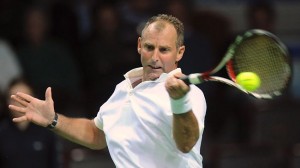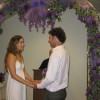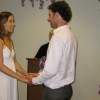By Randy Walker
@TennisPublisher
They say that before you judge a man, you should walk a mile in his shoes. However, can you judge a man after playing a big-time tennis match in his shoes…. literally?
Former top 40 pro Alex Bogomolov can certainly be the fairest judge of yours truly after one of the strangest circumstances, certainly in his tennis career, my media career and quite possibly in the history of the sport. The unusual and now laughable circumstance earned me one of the great informal recognitions in tennis, an official nick-name from the late, great tennis journalist and personality Bud Collins.
The scene was Santo Domingo, the capital city of the Dominican Republic, at the 2003 Pan American Games, which is the once-every-four-years gathering of North, Central and South American nations in a mini-Olympics style competition. I was there in my role at the U.S. Tennis Association as the press officer for the U.S. tennis team. In that time, the Pan Am Games was kind of at a level just below the Davis Cup and Fed Cup teams in the “Team USA” pecking order. The U.S. men’s team was led by Alex Bogomolov, who was ranked No. 117 in the world at the time, and also featured 1999 NCAA singles champion Jeff Morrison and 2000 NCAA singles champion Alex Kim. The women’s team featured Sarah Taylor, Ansley Cargill and Carly Gullickson. Former U.S. Davis Cupper Eliot Teltscher was the men’s coach and former U.S. Fed Cupper Debbie Graham was the women’s coach.
The matches were played at the brand new Centro Nacional de Tenis, just near the Faro a Colon, a lighthouse memorial to Christopher Columbus, who was the first European to visit the island of Hispaniola, on which the eastern part makes up the Dominican Republic.
The event was highlighted by the presence of former world No. 1 Marcelo Rios of Chile, who was the No. 1 seed (and eventually lost in the gold medal match to Fernando Meligeni of Brazil). Bogomolov was the No. 2 seed and in his opening match faced a talented 23-year-old Dominican player named Victor Estrella, who was ranked No. 865.
The two battled for almost three hours on the stadium court in the brutal August heat and humidity in front of a loud and rowdy crowd of Dominican fans, some equipped with drums and other percussion instruments that created an amazing Davis Cup-like atmosphere. Estrella showed that he was way better a player than his 800-ranking indicated and nearly beat Bogomolov, falling 6-4, 2-6, 6-3.
The U.S. contingent and Teltscher were very impressed with Estrella and sought him out in the locker room to offer encouragement and congratulations on an excellent match. I remember Teltscher saying that if only Estrella had more money and more opportunities, he could really become a good player. Remarkably, it was eight years later when he eventually cracked the top 200 in the ATP rankings and another three years after that becoming the first player from the Dominican Republic to break into the ATP top 100 at the age of 34! After the U.S. group saw Estrella in the locker room after the match it was immediately evident that he needed medical treatment as he went into a full, extreme body cramp and our U.S. Olympic trainer Adam Pecina jumped to immediately treat the stricken Dominican player. “Bogie” as he was affectionately known, was offered an IV by Pecina after the match, but declined. As was common in the Dominican Republic at the time, there was a “brown out” that night as the power went out at our hotel and we all had to gather at the pool by tiki torch light – and in the humidity – and eat food prepared off the hotel’s poolside open grill.
The next morning at the U.S. team hotel, I sat for breakfast and was soon joined by Bogomolov. I noticed immediately how red his face was and remarked to him that he looked terrible. I asked him if he had an IV the day before and he said he didn’t think he needed one. Pecina soon joined us and Bogomolov changed his mind and requested an IV. Getting an IV before a match was indeed an extreme measure.
Since Bogomolov was one of the “second-on” matches on the daily schedule that day, it was decided that he would stay behind with Pecina and get his IV and our bus driver Geraldo would drop off the first wave of our players for the 9 am matches and then return to the hotel to pick up Bogomolov and Pecina. I decided to stay behind as well and would go over with Bogomolov. It was agreed that our team administrator Mary Carlisle White would go with the first wave of players and would stay in touch with me as to the status of the match on court before Bogomolov’s match was to start. Again, this was before the time of live scoring on web pages and iPhones.
At about 9:45 am, as the first wave of matches got under way at the national tennis center, I got a call from White, who was on site: “You guys better get over here. The match before Bogie’s match is already at 6-0, 2-0. So he could be on the court in like 20 minutes.”
The courts were about 30 minute drive away and traffic in Santo Domingo was always unpredictable. I ran to Pecina’s room to get Bogomolov and get him to the courts. I found him with the IV needle still in his arm.
“We have to get going now,” I said. “The match before yours is at 6-0, 2-0 so you need to get there now.”
Bogomolov told Pecina to take the IV out of his arm and we quickly went to the front of the hotel, where our driver Geraldo was waiting for us. We told Geraldo, a resident of Santo Domingo, the urgency to get to the courts and he sped his way through the streets of Santo Domingo like he was Sandra Bullock driving the bus around Los Angeles in the movie “Speed.” After cruising through the crowded and chaotic streets of Santo Domingo, where stop signs and traffic lights were almost optional, we pulled into the tennis center. Just as Bogomolov walked to the tournament desk, his match was called to the court. He made it in the nick of time and avoided being defaulted.
He ran into the locker room to get his match clothes on but soon emerged with his face nearly as red as it was earlier in the morning at breakfast before his IV.
“Where are my shoes? My shoes! I can’t find my shoes!” he screamed in panic.
Bogomolov was there is in his full match outfit, but standing in the hallway with only his socks on. In the rush to get the courts, he left his match sneakers in his hotel room.
“Randy Walker! I left my shoes in my hotel room,” he shouted at me. “What size shoe do you wear?”
I was sporting a brand new pair of Adidas size 10.5 white sneakers. I had only worn them for two days after I received them as part of USOC Team Processing, where all representatives for Team USA received official merchandise.
“I’m a 10-and-a-half,” I responded, sheepishly, realizing that I probably would have to give them up for the greater cause.
“I’m a size 11,” said Bogie. “But let me try them on.”
I kicked off my shoes and tossed them to Bogie. He wedged his feet tightly into the shoes.
“This will have to do,” he said, tossing me a pair of sandals to wear as he grabbed his racquet bag and went off to the court where he was to play Pablo Gonzalez of Colombia.
My shoes served Bogie well. He advanced into the quarterfinals wearing them with a 7-6(5), 6-4 win. The heat and sun was so oppressive that Bogie called for a toilet break during the match, where he threw up. He said if it was not for some perfectly-time cloud cover, he probably would not have finished the match, not to mention the pre-match IV.
He walked over to me after the match and gave me a high five and we laughed. He then dropped the completely soaking wet sneakers, now also with scuffs from the hard courts, at my feet. At least he didn’t throw up on them. I got quotes from Bogie on his match where he was happy to credit “Randy Walker’s shoes” that he joked made him run extra fast.
Later in the afternoon, after all the USA team matches were done, I was dropped off at the USOC press center which was at a school in downtown Santo Domingo. I walked into the press center barefoot, holding my soaking wet, stinking sneakers.
The first person who saw me was Bob Condron, the head of media services for the U.S. Olympic Committee.
“What’s going on with the shoes?” he asked.
I told him the story of my shoes were a vital accessory in the Pan Am Games competition earlier in the day. He shook his head and laughed. “That’s a great story,” he said.
As I sat and typed up my game story for the day and had to subtlety mention my own involvement. Soon, Condron called out my name and said he wanted me to meet someone. He introduced me to an American reporter named Steve Springer from the Los Angeles Times who was covering the Pan Am Games. “He wants to do a story on your shoes.”
I happily relayed the events from earlier in the day and Springer took it all in and filed his story called “Missing Sole But Not Heart” (available to read here: https://www.latimes.com/archives/la-xpm-2003-aug-07-sp-panamtennis7-story.html). Condron also typed up an official U.S. Olympic Committee news story press release on the episode. As news of my Pan Am caper circulated around the tennis world – Sports Illustrated (“nada zapatos“) and the Associated Press among many other media outlets writing about me and my shoes – I got a flurry of emails from friend and colleagues. The most memorable email came from Bud Collins, known best for his work at the Boston Globe and NBC Sports who was well-known for bestowing nick-names to some of the biggest tennis stars in the world, like Steffi Graf being called “Fraulein Forehand” or Jimmy Connors as the “Brash Basher of Belleville. I now was being added to this illustrious list of people to get a nickname from Collins as in his email, he officially anointed me as “Gringo Good Shoes.” It stuck. Every time I saw Bud and his wife Anita at tennis events around the world, at the U.S. Open or in phone conversations or book signings for his “Bud Collins History of Tennis” book that I ended up being the publisher for, I would always be greeted as “Gringo Good Shoes” or sometimes just “Good Shoes” for short.
The shoes eventually dried and I popped them in the washing machine when I got back home to the USA and wore them for a while, even at one point at the U.S. Open posing for a photo with Collins while wearing them. I eventually retired them, but couldn’t stand to throw them out. I still have them in my closet, a prop to one of the most unusual moments in my tennis media career.
As a side note, Bogie and I continued to have our special bond, that soon transferred to his older sister Katia, who soon became a co-worker of mine at the USTA for a brief time. She and I also became friends and soon after that, I introduced her to my friend Patrick Holness, who soon became her husband! And, to boot, they got married on my 39th birthday.
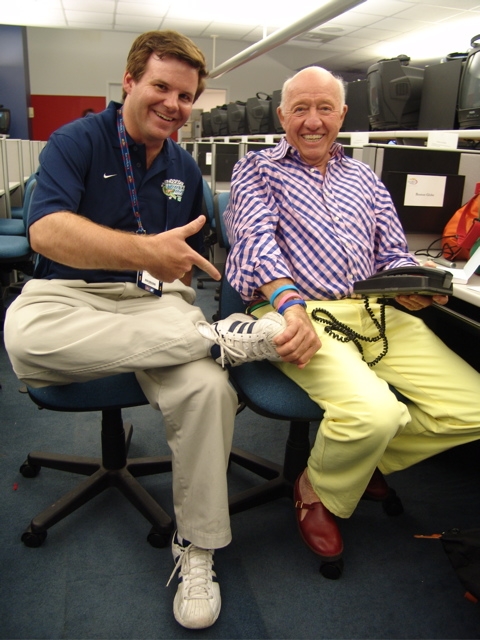

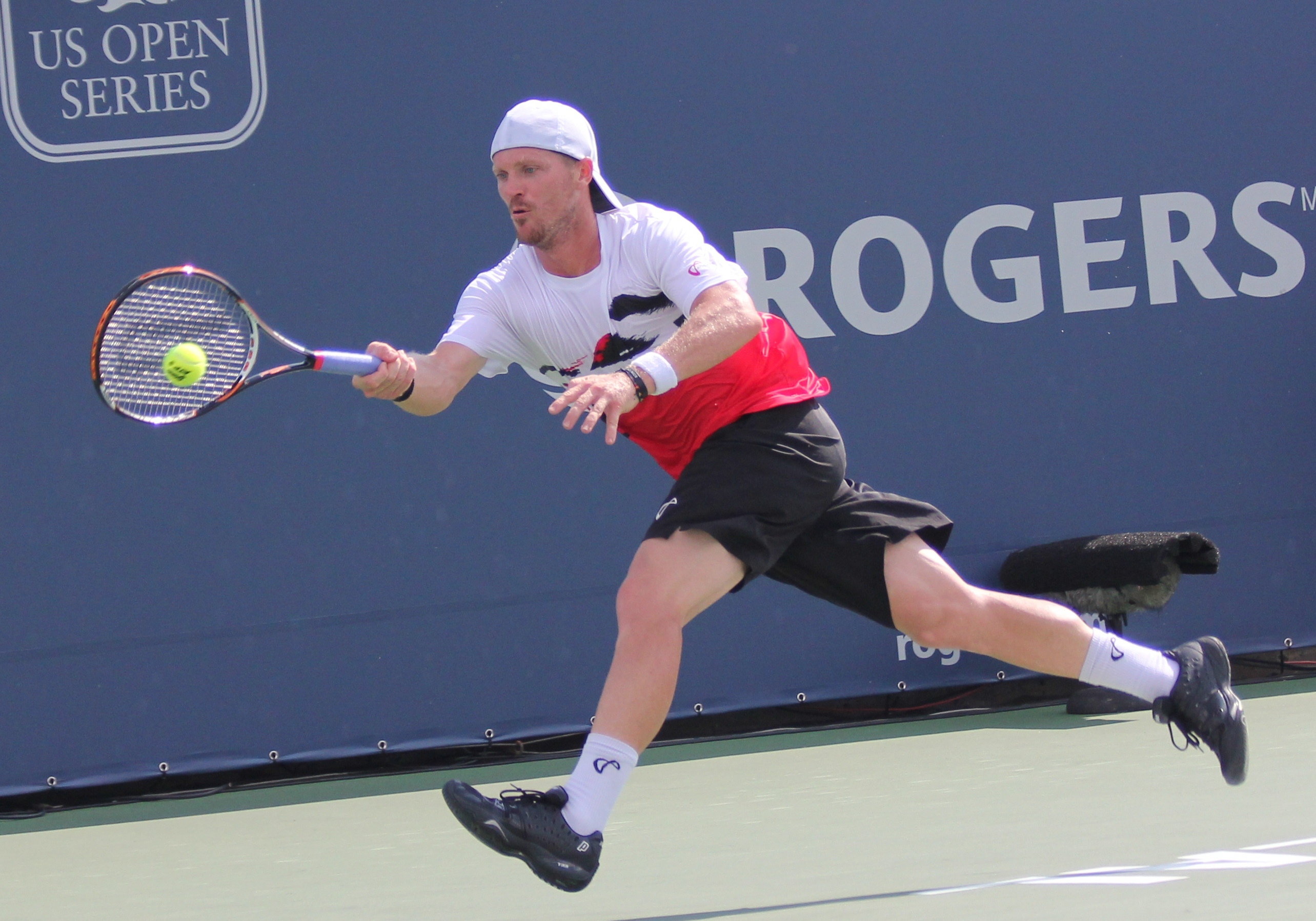 Alex Bogomolov, Jr.
Alex Bogomolov, Jr.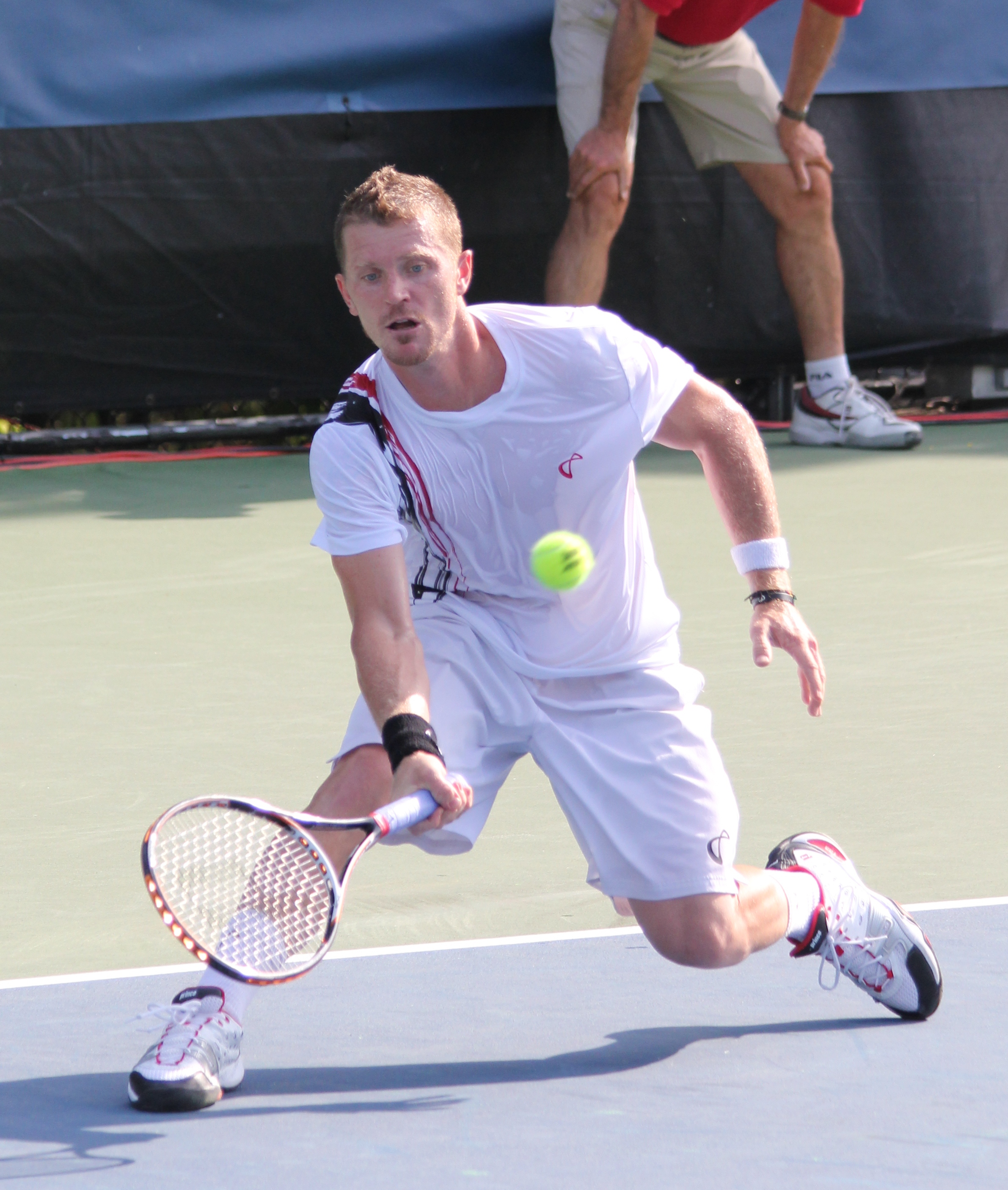 Alex Bogomolov, Jr.
Alex Bogomolov, Jr.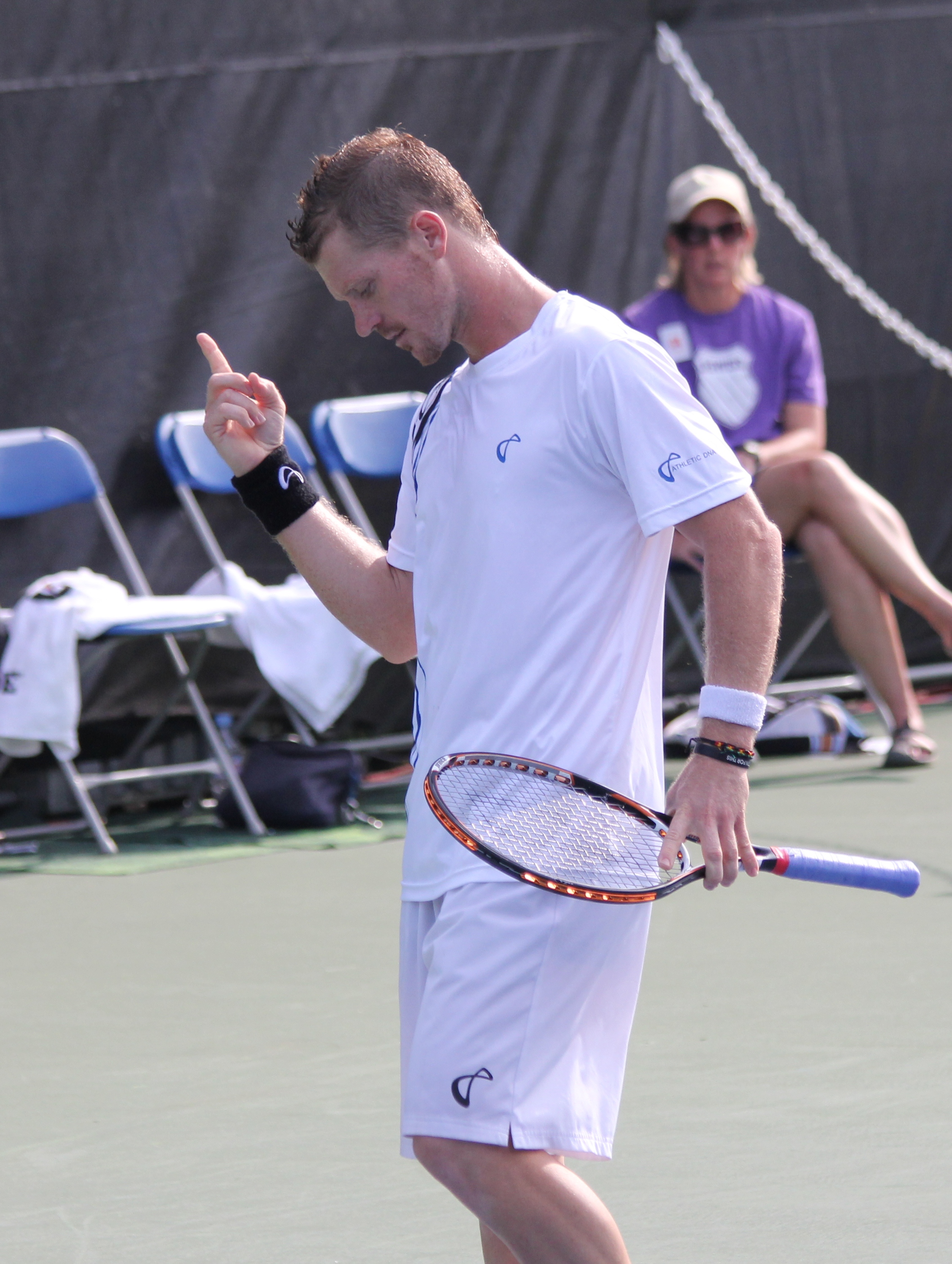 Alex Bogomolov, Jr.
Alex Bogomolov, Jr.